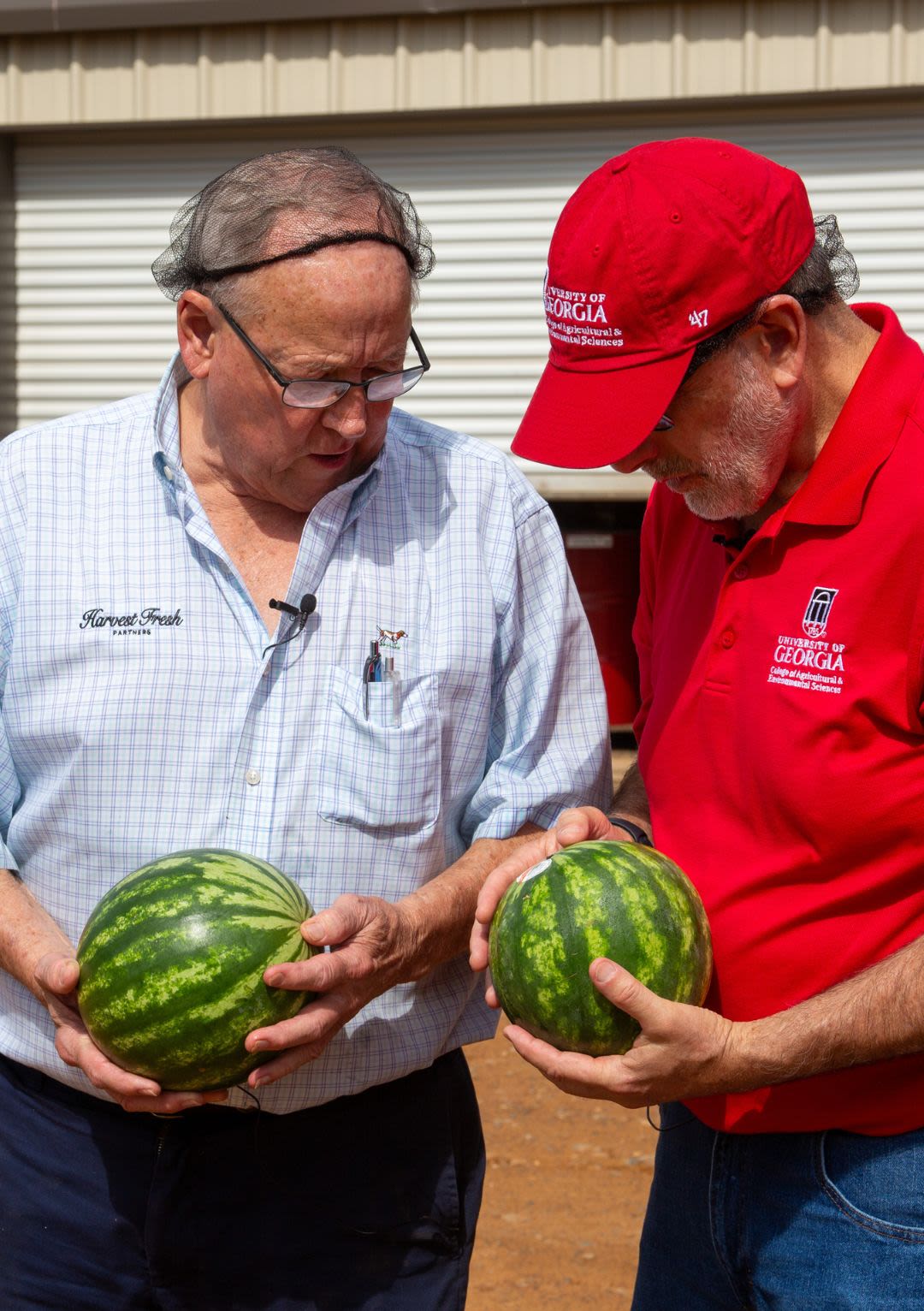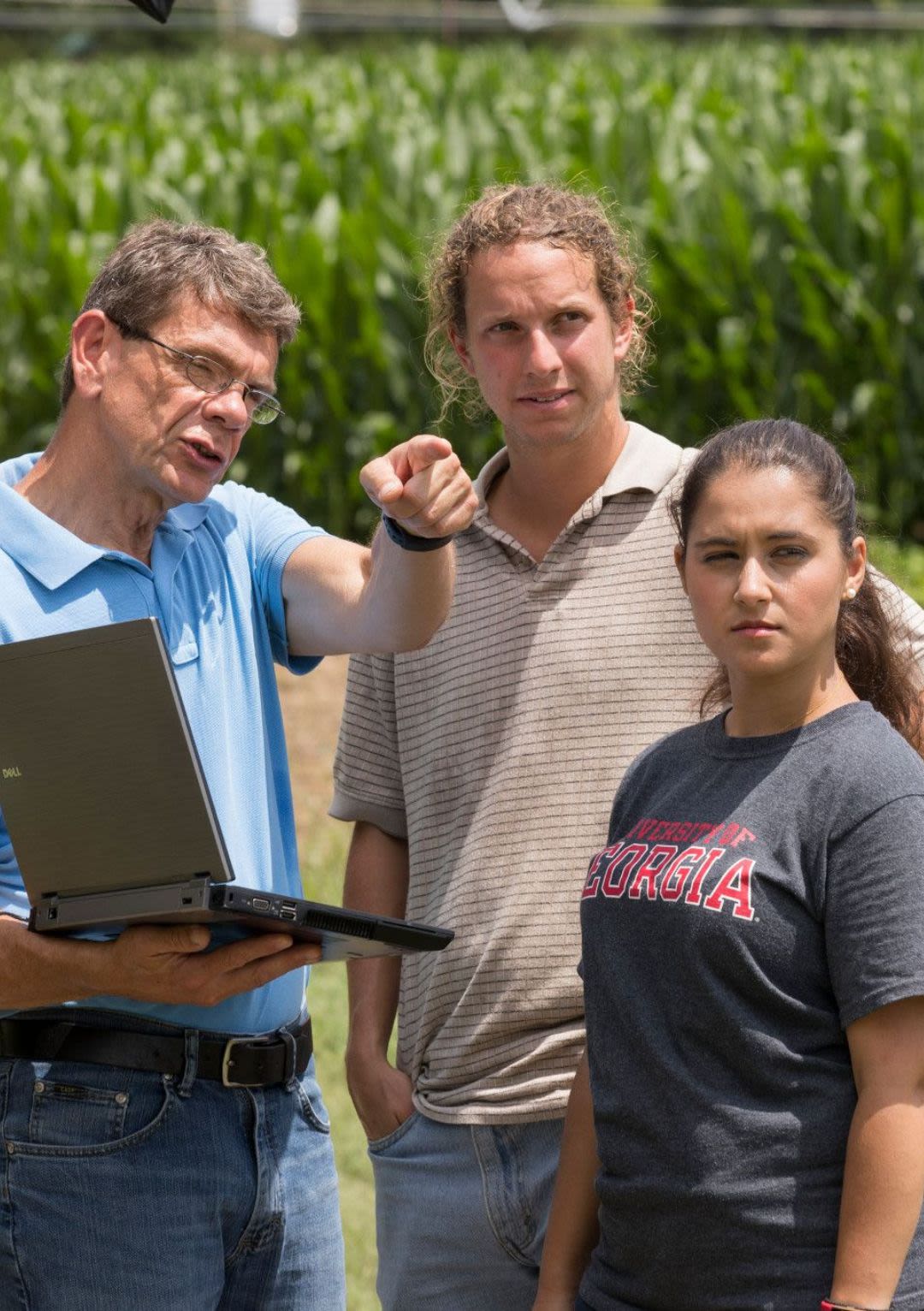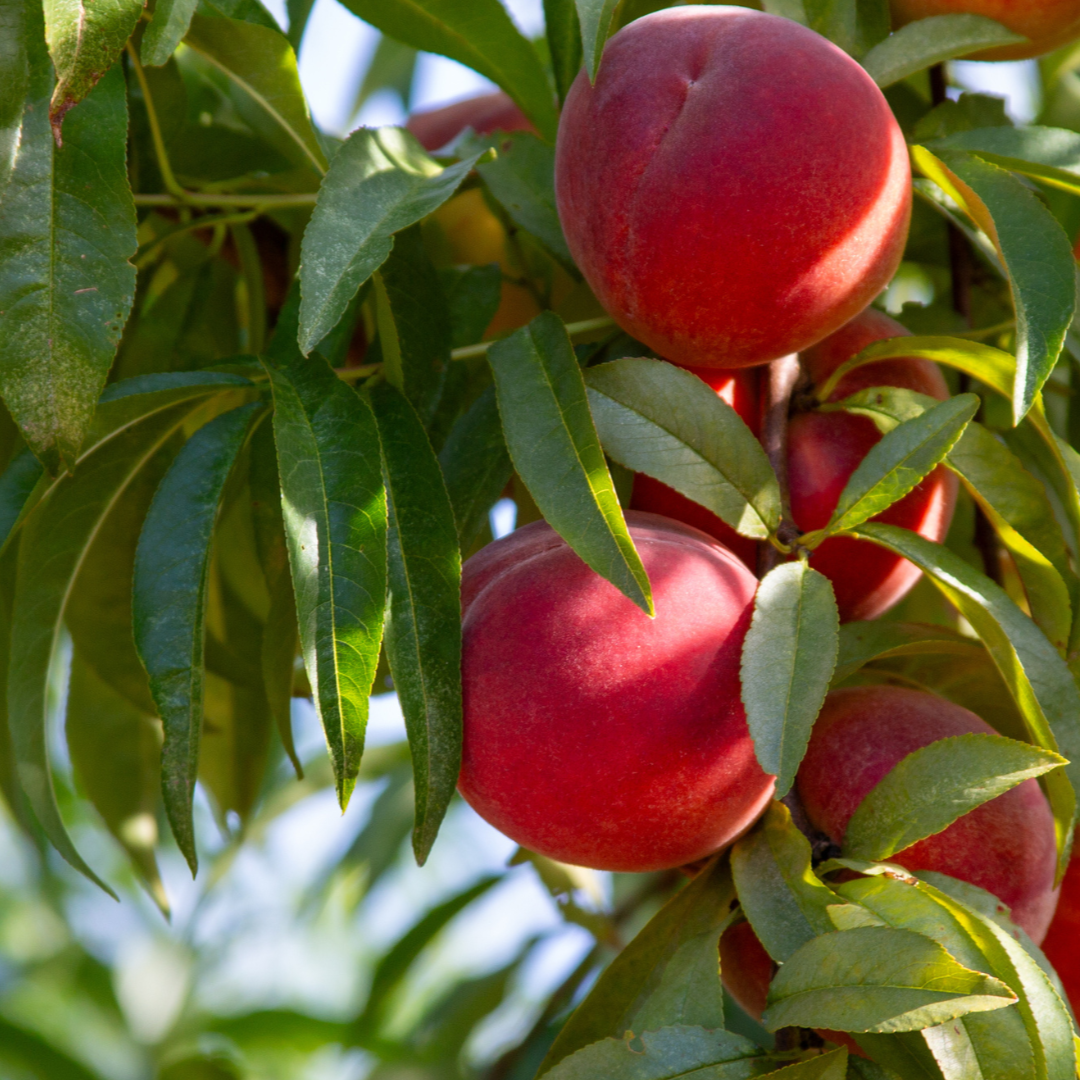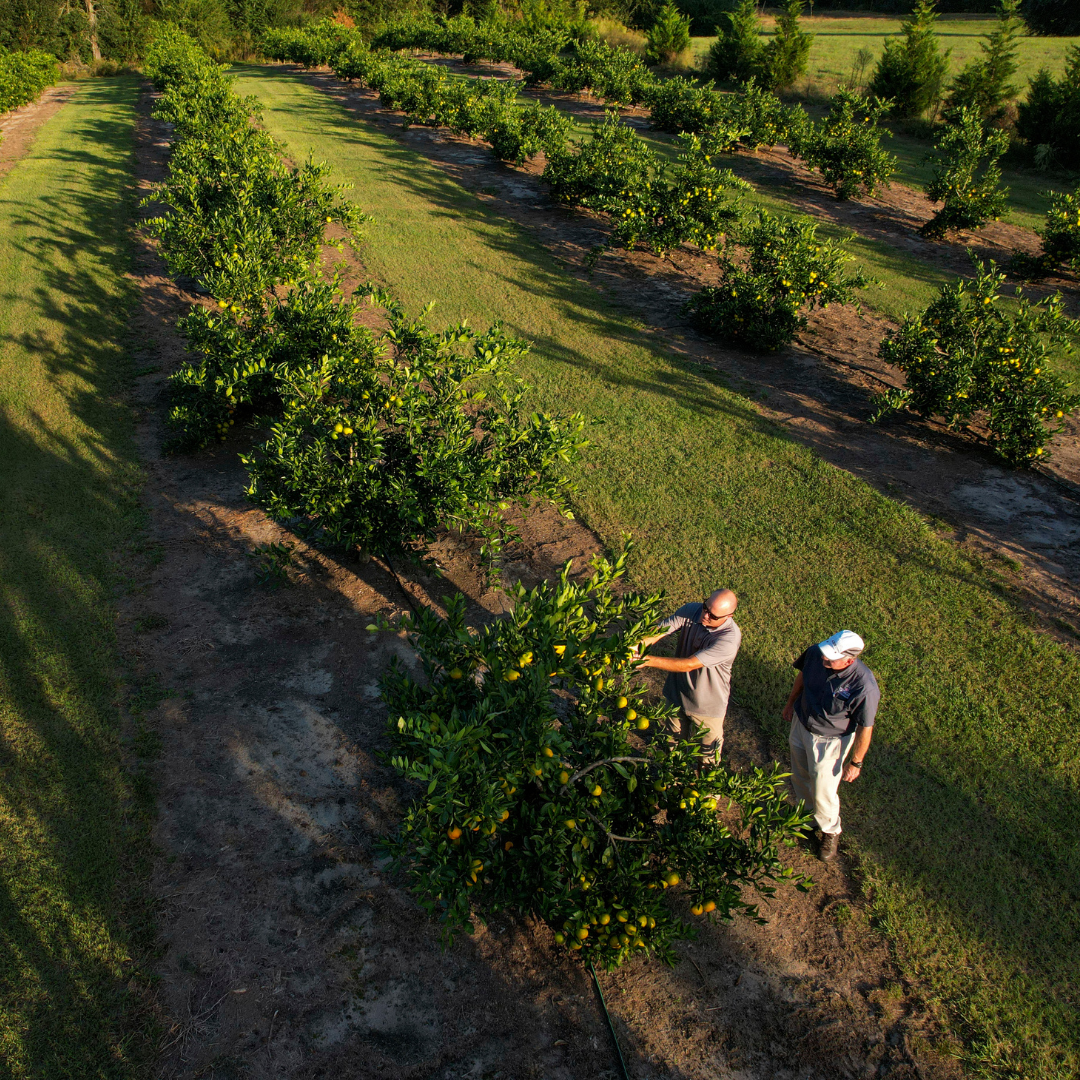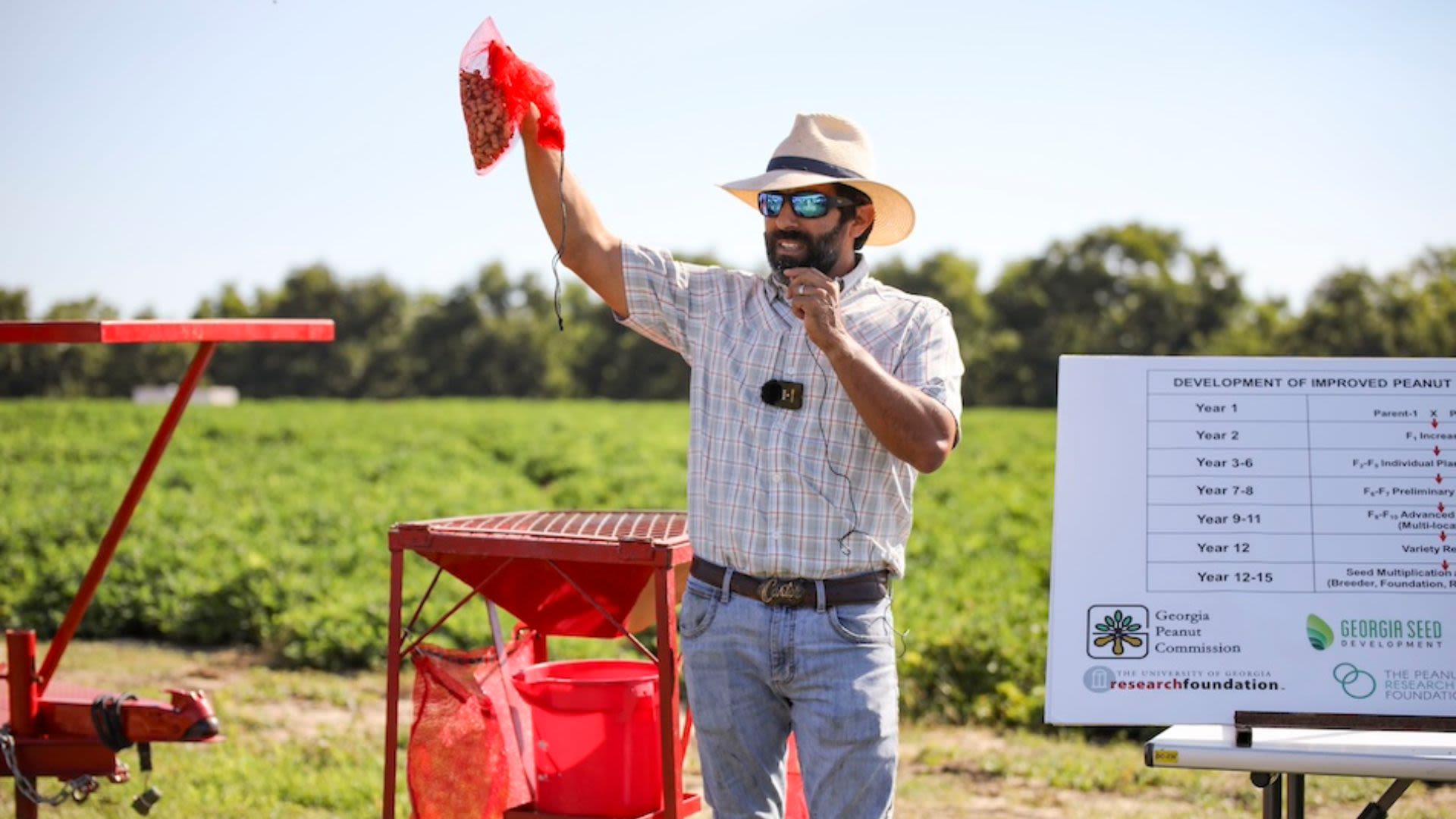Insights for news media
Georgia Ag Impact Report
The Georgia Ag Impact Report provides the state's agricultural stakeholders the research-backed insights they need to support Georgia’s No. 1 industry. As a national leader in agricultural innovation and outreach, the University of Georgia College of Agricultural and Environmental Sciences is proud to empower producers with innovative research to cultivate a stronger, healthier Georgia.
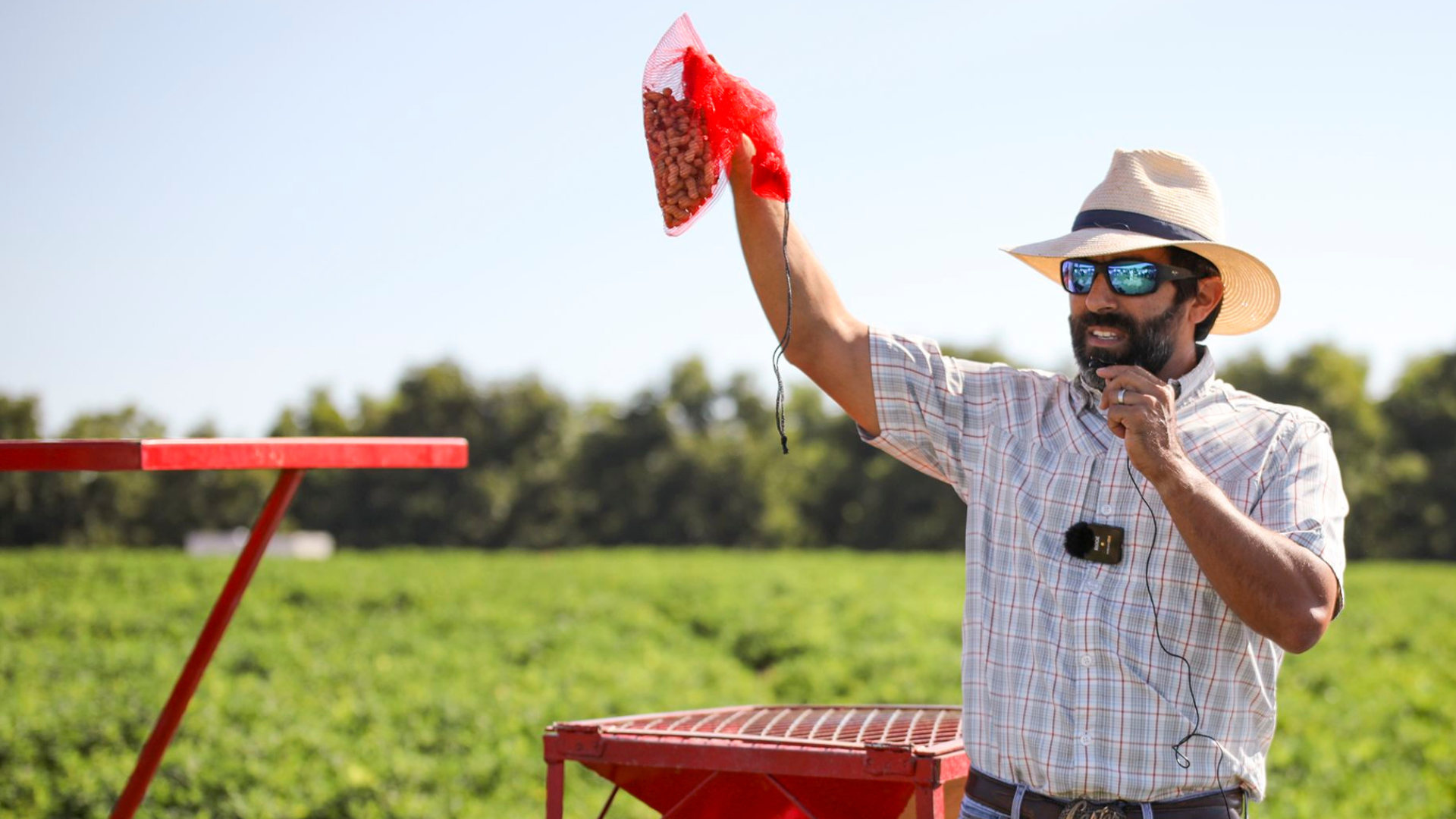
Insights for news media
Georgia Ag Impact Report
The Georgia Ag Impact Report provides the state's agricultural stakeholders the research-backed insights they need to support Georgia’s No. 1 industry. As a national leader in agricultural innovation and outreach, the University of Georgia College of Agricultural and Environmental Sciences is proud to empower producers with innovative research to cultivate a stronger, healthier Georgia.

Economic Outlook
The 2023 Georgia Farm Gate Value is $17,608,944,181.
The 2025 Georgia Ag Impact Report data is based on the 2023 Georgia Farm Gate Value Report, an annual county-level economic valuation for all food and fiber production in the state.
In 2023, food and fiber production and related industries represented $91.4 billion in output to Georgia’s $1.4 trillion economy and more than 381,200 jobs statewide.
Key takeaways: U.S. and Georgia
- 2025 economic forecast for Georgia calls for an economic slowdown, but not a recession. We estimate the probability of recession at 25%.
- Georgia’s economy will grow faster than the nation’s economy because of recent economic development success, stronger demographics, and favorable economic structure.
- The unemployment rate is expected to rise, but not too much. The rise in the unemployment rate will mostly reflect less hiring rather than more layoffs.
- Inflation fell to 3% in 2024, but it will not fall further in 2025.
- In terms of economic severity, the main downside risks to growth are a mistake by the Federal Reserve, a financial crisis, an energy price shock, a federal policy mistake, and a stock market correction.
Key takeaways: Georgia agriculture
- Food price growth in 2025 is projected to align with inflation at around 2.5%.
- Prices for food consumed away from home are expected to remain higher than those for food consumed at home.
- Commodity prices are forecast to trend downward in the near term, with stability anticipated in the medium term.
- According to the most recent USDA farm income forecast, declining crop prices are expected to outweigh revenue gains from animal products, combined with slightly reduced input costs, leading to lower national net farm income in 2024.
- USDA projections indicate a decline in net farm income of 4.1% in nominal terms and 6.3% in inflation-adjusted terms nationally in 2024. However, these projections will not apply to Georgia because of the significant damages caused by Hurricane Helene, which resulted in lost output and infrastructure.
- Looking forward to 2025 and beyond, numerous geopolitical risks combined with various proposed policies—including tariffs and retaliation, immigration controls, tax policies, energy strategies, and inflation-targeted monetary policies—contribute to ongoing uncertainties surrounding U.S. and Georgia agricultural economic outcomes.
For more insights and key takeaways, please visit the 2025 Georgia Ag Forecast annual publication.
The Georgia Ag Forecast is an annual seminar hosted by CAES sharing the latest research and information from CAES faculty to help Georgia farmers and agribusinesses prepare for their year ahead.
Economic outlook
The 2023 Georgia Farm Gate Value is $17,608,944,181.
The 2025 Georgia Ag Impact Report data is based on the 2023 Georgia Farm Gate Value Report, an annual county-level economic valuation for all food and fiber production in the state.
In 2023, food and fiber production and related industries represented $91.4 billion in output to Georgia’s $1.4 trillion economy and more than 381,200 jobs statewide.
Key takeaways: U.S. and Georgia
- 2025 economic forecast for Georgia calls for an economic slowdown, but not a recession. We estimate the probability of recession at 25%.
- Georgia’s economy will grow faster than the nation’s economy because of recent economic development success, stronger demographics, and favorable economic structure.
- The unemployment rate is expected to rise, but not too much. The rise in the unemployment rate will mostly reflect less hiring rather than more layoffs.
- Inflation fell to 3% in 2024, but it will not fall further in 2025.
- In terms of economic severity, the main downside risks to growth are a mistake by the Federal Reserve, a financial crisis, an energy price shock, a federal policy mistake, and a stock market correction.
Key takeaways: Georgia agriculture
- Food price growth in 2025 is projected to align with inflation at around 2.5%.
- Prices for food consumed away from home are expected to remain higher than those for food consumed at home.
- Commodity prices are forecast to trend downward in the near term, with stability anticipated in the medium term.
- According to the most recent USDA farm income forecast, declining crop prices are expected to outweigh revenue gains from animal products, combined with slightly reduced input costs, leading to lower national net farm income in 2024.
- USDA projections indicate a decline in net farm income of 4.1% in nominal terms and 6.3% in inflation-adjusted terms nationally in 2024. However, these projections will not apply to Georgia because of the significant damages caused by Hurricane Helene, which resulted in lost output and infrastructure.
- Looking forward to 2025 and beyond, numerous geopolitical risks combined with various proposed policies—including tariffs and retaliation, immigration controls, tax policies, energy strategies, and inflation-targeted monetary policies—contribute to ongoing uncertainties surrounding U.S. and Georgia agricultural economic outcomes.
For more insights and key takeaways, please visit the 2025 Georgia Ag Forecast annual publication.
The Georgia Ag Forecast is an annual seminar hosted by CAES sharing the latest research and information from CAES faculty to help Georgia farmers and agribusinesses prepare for their year ahead.
For media inquries:
Jordan Powers is the public relations manager for the UGA College of Agricultural and Environmental Sciences and UGA Cooperative Extension.
Contact Jordan for assistance with:
- Contacting expert sources across disciplines
- Securing quotes from UGA College of Agricultural and Environmental Sciences and UGA Extension leadership
- Identifying additional subject matter background material
- Accessing photos and b-roll
Contact Information:
Email: jpowers@uga.edu
Phone: 706-542-4274
For media inquiries:
Jordan Powers is the public relations manager for UGA College of Agricultural and Environmental Sciences and UGA Cooperative Extension.
Contact Jordan for assistance with:
- Contacting expert sources across disciplines
- Securing quotes from UGA College of Agricultural and Environmental Sciences and UGA Extension leadership
- Identifying additional subject matter background material
- Accessing photos and b-roll
Contact Information:
Email: jpowers@uga.edu
Phone: 706-542-4274
Media kit
Georgia Ag Impact Report text
News media may republish content from the Georgia Ag Impact Report with proper attribution to the UGA College of Agricultural and Environmental Sciences.
Digital assets and photography
Email Jordan Powers for relevant digital assets and photographs included within the Georgia Ag Impact Report, which may be used alongside coverage of the Georgia Ag Impact Report.
Ag Snapshots
Since 2013, UGA Extension has been providing data snapshots of Georgia's agricultural industry based on the Georgia Farm Gate Value Report.
- 2025 Ag Forecast Takeaways - based on 2023 data
- 2024 Ag Snapshot - based on 2022 data
- 2023 Ag Snapshot - based on 2021 data
- 2022 Ag Snapshot - based on 2020 data
- 2021 Ag Snapshot - based on 2019 data
- 2020 Ag Snapshot - based on 2018 data
- 2019 Ag Snapshot - based on 2017 data
- 2018 Ag Snapshot - based on 2016 data
- 2017 Ag Snapshot - based on 2015 data
- 2016 Ag Snapshot - based on 2014 data
- 2015 Ag Snapshot - based on 2013 data
- 2014 Ag Snapshot - based on 2012 data
- 2013 Ag Snapshot - based on 2011 data




